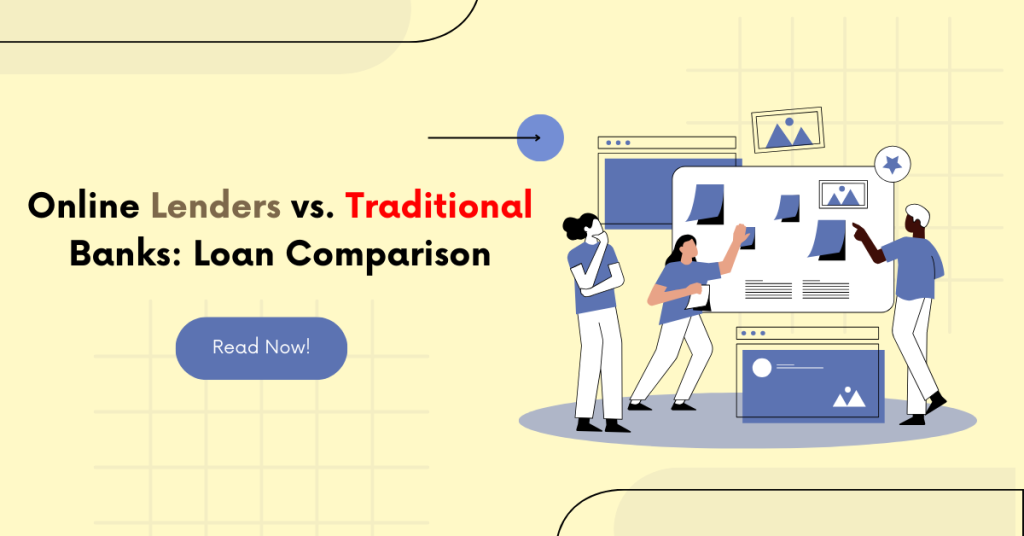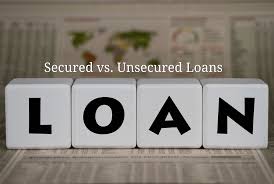In Australia, borrowing money has evolved significantly beyond the traditional bank branch. The rise of online loans has provided consumers with a compelling alternative, offering distinct advantages over conventional bank loans. However, deciding between an online loan vs. traditional bank loan requires understanding their core differences, benefits, and drawbacks. This guide will provide a comprehensive comparison to help you determine which option best suits your financial needs, preferences, and circumstances.
Understanding the Two Main Avenues of Borrowing
Traditional Bank Loans:
These are loans offered by established financial institutions like major banks (Commonwealth Bank, Westpac, NAB, ANZ) and credit unions. Historically, they involved in-person applications, extensive paperwork, and longer processing times. While many now offer online application portals, their underlying processes and risk assessments often retain a more traditional structure.
Online Loans:
These are loans provided by non-bank lenders (fintech companies, specialist online lenders) or through the digital platforms of traditional banks, where the entire application, approval, and disbursement process is conducted online. They leverage technology to offer speed, convenience, and often more flexible criteria.
Key Differences: Online Loans vs. Traditional Bank Loans
When to Choose an Online Loan
Online loans are often the better choice if you prioritize:
- Speed and Urgency: If you need funds quickly (e.g., a “same day loan” for an emergency expense like a car repair or medical bill), online lenders typically offer the fastest application and disbursement times.
- Convenience: For those who prefer to manage their finances entirely digitally, without visiting a physical branch or dealing with extensive paperwork. Apply anytime, anywhere.
- Minimal Hassle: If you want a streamlined application process that leverages technology (like secure bank statement access) to reduce documentation requirements.
- Flexible Eligibility: If you have a less-than-perfect credit history or non-traditional income sources, online lenders may offer more flexible criteria than traditional banks, sometimes specializing in “online loans for bad credit.”
- Small to Medium Loan Amounts: For amounts ranging from a few hundred to tens of thousands of dollars, online lenders often provide efficient solutions.
- Comparison Shopping: The online environment makes it incredibly easy to compare multiple offers side-by-side using comparison websites, ensuring you find the best comparison rate.
When to Choose a Traditional Bank Loan
Traditional bank loans might be more suitable if you value:

- Personalised Advice: If you prefer face-to-face interaction with a loan officer to discuss your financial situation, explore various options, and receive tailored advice.
- Complex Financial Situations: For very large loan amounts (e.g., mortgages) or complex financial scenarios where in-depth consultation is beneficial.
- Existing Banking Relationship: If you have a long-standing relationship with your bank, they might offer preferential rates or a more streamlined process as an existing customer.
- Brand Familiarity/Trust: Some borrowers feel more secure dealing with a well-established, household-name bank, despite online lenders being equally regulated (with an ACL).
- Lower Rates for Prime Borrowers (Sometimes): While online lenders are competitive, major banks can sometimes offer the absolute lowest rates for borrowers with impeccable credit scores and very strong financial profiles, especially for larger loan amounts.
Crucial Safety Considerations for Both
Regardless of your choice, safety should always be paramount:
- For Online Loans:
- Verify ACL: Always confirm the online lender holds a valid Australian Credit Licence (ACL) issued by ASIC. This is your most important safeguard.
- Understand Comparison Rate: Focus on the comparison rate to understand the total cost, including all fees.
- Secure Data Practices: Ensure they use secure, read-only bank statement access (like Illion Open Data) and have robust data protection.
- Read the Fine Print: Meticulously review the loan contract for all terms and conditions.
- For Traditional Bank Loans:
- Read Disclosure Statements: Even with a bank, thoroughly read the Key Facts Sheet and loan contract.
- Understand Fees: Be clear on all fees and charges.
- Responsible Lending: Ensure they assess your ability to repay responsibly.
Conclusion: Making the Right Choice
The decision between an online loan vs. traditional bank loan in Australia ultimately depends on your individual priorities. If speed, convenience, minimal paperwork, and potentially more flexible eligibility (especially for “bad credit loans”) are your main drivers, an online loan is likely the best fit. If you value face-to-face interaction, a long-standing institutional relationship, or have very complex borrowing needs, a traditional bank loan might be more suitable.
In either case, the core principles of responsible borrowing remain the same: assess your needs, compare all costs (especially the comparison rate), ensure the lender is legitimate and regulated (check for an ACL), and only borrow what you can comfortably afford to repay. By doing your due diligence, you can confidently choose the financial solution that best serves your interests.













